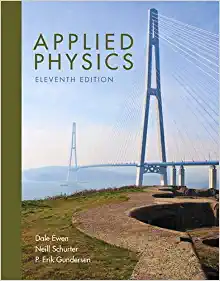Answered step by step
Verified Expert Solution
Question
1 Approved Answer
Dear tutors, I would like to ask for help with the main points of my study guide so I can focus in that to study
Dear tutors, I would like to ask for help with the main points of my study guide so I can focus in that to study more! Module 12: (Chapter 13.1 through 13.4) The definition of the physical quantity "Temperature" in macroscopic scale and microscopic scale. - Conversion of temperature between different scales (Fahrenheit and Celsius) and the SI unit of temperature (Kelvin). The meaning of thermal expansion in 1D, 2D and 3D and the meaning of the coefficient of linear expansion and coefficient of volume expansion. The applications of thermal expansion and peculiar behavior of the water with the temperature. The meaning of thermal stress? The difference between ideal gas and real gas? What does Ideal gas law say? How to describe P-V, P-T and T-V graphs? You must be able to use above concepts to solve problems Basic Understanding of Kinetic theory (Review the summary of this section) . Module 13 (Chapter 14.1 through 14.7) The definition of Heat and Units of Heat. What does the zeroth law of thermodynamics say? The meaning of specific heat capacity (c) and how to calculate heat when heat transfer due to change in temperature. The meaning of the latent heat of fusion and vaporization and how to calculate heat transfer due to phase change. What are the three common methods of heat transfer and how to describe them. How to calculate the rate of heat transfer via conduction and radiation. The meaning of the emissivity. You must be able to use above concepts to solve problems Module 14 (Chapter 15.1 & 15.2) What does the first law of thermodynamics say? What are the equation based on the first law of thermodynamics and the sign convention for heat (Q) and work (W)? How to modify the equation of the first law of thermodynamics based on the simple processes, such as isochoric, isobaric, isothermal and adiabatic? You must be able to use above concepts to solve problems Module 15 (Chapter 16.1 through 16.6) What does Hooke's law say? What is the difference between periodic motion and simple harmonic motion? What is an example for the simple harmonic motion? What physical quantities that can be used to describe the periodic motion? (understand the meaning and identify from graphs the physical quantities such as period, angular frequency, frequency, amplitude) What is the equation of the displacement of the simple harmonic oscillator (an Ideal spring is attached to a mass) as a function of time? Identify each variable and constant in the equation How does the position, instantaneous velocity and acceleration of simple harmonic oscillator change during oscillation? What is the total energy of the simple harmonic oscillator. How to apply the conservation of total mechanical energy in the simple harmonic oscillator. What is the equation of the period of the simple harmonic oscillator. What is the meaning of the simple pendulum and what is the equation of the period of the simple pendulum. What is the relationship of the simple harmonic motion and the circular motion
Step by Step Solution
There are 3 Steps involved in it
Step: 1

Get Instant Access to Expert-Tailored Solutions
See step-by-step solutions with expert insights and AI powered tools for academic success
Step: 2

Step: 3

Ace Your Homework with AI
Get the answers you need in no time with our AI-driven, step-by-step assistance
Get Started


